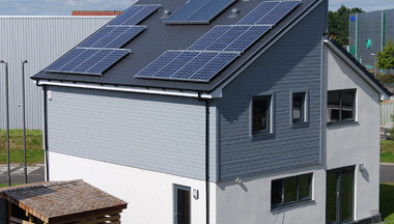Rent controls are disrupting supply of new rental homes in Scotland, report finds

Rent controls and political uncertainty are affecting investor appetite to fund and deliver Build-to-Rent (BtR) homes in Scotland, according to a new report published today by the Scottish Property Federation in association with researchers Rettie & Co.
The Assessment of Scotland’s Rent Freeze and Impacts Report shows that the system of rent control introduced under the Cost of Living (Tenant Protection) Act will disrupt the future supply of new homes for rent.
A series of in-depth interviews with institutional investors has shone a light on the impact of Scotland’s six-month rent freeze and recently introduced 3% rent cap on the Scottish BtR market. Of the 14 investors interviewed with a combined £15 billion of BtR assets, nine judged Scotland to be unattractive, including four who view the country as un-investable under current conditions.
Scotland, which has been slower to attract BtR investment than other parts of the UK, had been experiencing strong BtR growth in both Glasgow and Edinburgh in recent years. The pipeline of BtR in Scotland sits at around 17,000, but two-thirds (67%) are in planning including 6,000 properties with planning permission where construction is yet to begin on site.
Both cities have a shortage of rental properties, especially for high quality options. Despite the clear underlying market appeal, investors now view Scotland as a political risk due to the combination of legislative uncertainty and the rent interventions, seen as disproportionate.
Traditionally, BtR attracts modest, consistent yields and is viewed as a stable, long-term investment. The way in which the rent controls were introduced has increased the risk calculations for investors, with concern that the Scottish Government could implement other short-term policy changes and further undermine the BtR business model.
As Scotland continues to experience acute housing supply shortages, increasing pressure on the market, new housing investment should be part of the solution. BtR homes can be built quickly in large numbers and provide a range of options, including affordable housing through mid-market rental models. In addition, the new housing stock is more energy efficient, which helps to reduce bills for renters.
Investors are calling on the Scottish Government to incentivise investment in the BtR sector by:
- Creating a stable policy environment that removes the risk of ongoing interventions in the market and reduces the risk premium
- Positive planning policy, including supporting density for BtR and dealing with planning applications quickly
- Working with the sector to foster confidence and trust for urgently required housing investment
David Melhuish, director of the Scottish Property Federation, said: “The impact of the emergency legislation on the BtR market over the last six months is clear. The lack of long-term policy certainty means investors largely view Scotland as a risk, compared with more stable locations in other parts of the UK.
“This situation is a disincentive to investment and as a consequence, investors are going to continue to divert capital elsewhere. The rental market in Scotland, and crucially renters, will continue to bear the brunt as new housing supply is constrained and demand for accommodation soars.
“At a time when we need more housing, and a quality rental sector, investment in Scotland is reducing. The industry and the Scottish Government should be working together to ensure Build-to-Rent investment is flowing into the country.”
Dr John Boyle, director of research at Rettie & Co and the main author of the research, added: “Our work clearly shows the potential for BtR in Scotland as part of the answer to the housing crisis. However, the sector has been stymied by what investors consider to be high levels of political risk. The recent emergency legislation has elevated these risks and less supply will come forward as a result, which will have consequences for affordability and availability of properties for rent in Scotland.”








